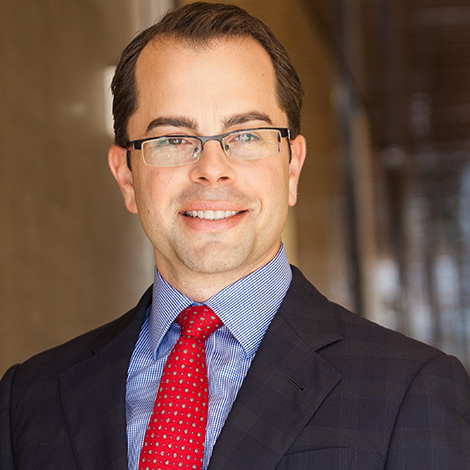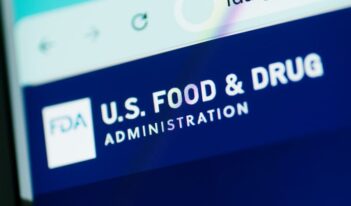
FDA should encourage states to be the primary regulators of stem cell procedures.
In 2012, an op-ed in The Wall Street Journal, “The FDA Wants to Regulate Your Cells,” criticized a recent federal trial court decision in which a judge endorsed the U.S. Food and Drug Administration’s (FDA) sweeping efforts to regulate human cells as drugs, even when administered as part of non-surgical medical procedures to the same patients from whom they were removed. According to the op-ed, the court’s ruling—later affirmed by an appeals court—brought virtually every aspect of medical practice within the scope of FDA’s regulatory authority, with the unfortunate result of forestalling the development of cellular therapies to help repair damaged body parts.
The author of that op-ed, Scott Gottlieb, is now the Commissioner of FDA, and his op-ed might provide us with some clues as to what FDA’s new “comprehensive” regulatory framework, set to be unveiled this fall, might look like. But whatever shape FDA’s forthcoming framework might take, the agency should encourage efforts underway in individual states to create a safe and sound regenerative medicine industry. These state efforts should be the first steps towards an industry led by doctors practicing medicine, regulated by their states and medical boards, and held together within “bright lines” by federal enforcement.
Because the scope of FDA’s authority over regenerative cellular therapies was at one time unclear, between 2014 and 2015 FDA sought to clarify the terms of its authority by publishing four draft guidance documents which presented the agency’s “current thinking” on key topics. These guidance documents were highly restrictive, leading to an industry uproar that reached a crescendo in September 2016 when FDA hosted a two-day summit featuring an agenda filled wall-to-wall with presentations from industry representatives, including doctors, universities, product manufacturers, ethicists, and patients. Some comments were more critical of FDA than others; the panel of FDA officials heard them all but offered no comments in return.
Three months later, Congress passed the 21st Century Cures Act, which contained a provision to accelerate FDA’s approval pathway for qualifying regenerative medicine advanced therapies (RMATs). The new RMAT pathway streamlines communication between FDA and product developers during the review process and, according to FDA, will significantly cut the time to bring RMATs to market. Despite its ambitions, the Cures Act still assumes that autologous medical procedures—those involving a patient’s own cells—are manufacturing events subject to FDA oversight. Although helpful to companies developing allogeneic RMAT products—think of them as stem cells in a bottle—it may not be enough for the many doctors already treating their patients with autologous procedures inconsistent with the draft guidance documents.
FDA’s efforts to regulate this industry have signaled that it is the regulator of first—and only—resort, but until recently it had rarely asserted its authority—not even sending a warning letter when a Florida doctor blinded two patients by injecting fat-derived cells into their eyes. Within this enforcement vacuum, an industry flourished, enabling any doctor with a liposuction device, centrifuge, and an infusion pump to become a “stem cell” doctor. Meanwhile, states and their medical boards, because of FDA’s court-approved jurisdiction, have failed to hold doctors to the confines of their licenses and specialties and have yet to set forth best practices for the use of stem-cell procedures within their borders.
Given this history, the regenerative medicine industry took notice in July, when Gottlieb announced that, as part of FDA’s “Innovation Initiative,” the agency will introduce a new “comprehensive framework for the development and proper FDA oversight of regenerative medicine.” Through the issuance of new guidance documents, the framework is intended to allow providers of medical care to prove the safety and effectiveness of regenerative products.
The industry also took notice in August when FDA launched highly public enforcement actions against two companies which had prominently acted inconsistently with FDA’s draft guidance. After issuing a warning letter to a company that had left two patients blind and seizing vials of smallpox vaccine from another company that had improperly used it, Gottlieb vowed to “step up enforcement” and described the targets as “unscrupulous” and “bad actors” who “put patients at a significant risk.”
Unfortunately, FDA cannot enforce this problem away. FDA now finds itself with a distributed, decentralized drug manufacturing industry, and too few resources to know where all the participants are. Of course, this is precisely what market participants have complained about in litigation against FDA: The federal government was never designed to replace the police powers of the individual states and therefore lacks the infrastructure to regulate the nation’s rapidly expanding list of “stem cell doctors.” The courts have ruled that FDA possesses the necessary regulatory authority; however, given the distributed nature of the growing industry, perhaps distributed regulation would make for a better approach.
We cannot say for certain what FDA will reveal this fall, but Gottlieb’s op-ed from 2012 creates some reason for optimism. In it, he described FDA as an agency “perennially complaining to Congress that it lacks the resources to do its day job of regulating products that fall squarely within its purview,” but “always seeking novel authority to insert itself into new areas of science where its mandate is shaky.”
Today, Gottlieb has the power to focus FDA’s attention on RMATs which come clearly within its authority, as allogeneic products surely do. But he also has the power to allocate regulatory responsibility over autologous stem cell procedures to the states and medical boards that are best suited to regulate medical practitioners.
This fall, FDA should choose to distribute and decentralize regulatory authority over autologous stem cell procedures, but it should continue to make clear, as it did in August, that it will always have authority to regulate the entire industry with the full weight of federal law.
But if practitioners can satisfy certain criteria, FDA should exercise enforcement discretion and save its enforcement efforts for those actors who present public health risks by, for example, violating the laws and standards developed by the individual states once their authority has been acknowledged by FDA. This is not a novel concept: FDA has exercised enforcement discretion in numerous instances, including with respect to fecal transplants and certain drugs and medical devices.
To receive the benefit of this enforcement discretion, physicians should be required to:
- Treat patients in states which have defined autologous stem cell procedures as part of the practice of medicine and have created enforceable standards to regulate them;
- Be licensed to practice medicine, and only offer autologous stem cell procedures within the scope of their licenses and specialties;
- Comply with all applicable state laws and standards governing autologous stem cell procedures;
- Comply with FDA’s Part 1271 regulations, including, without limitation, those governing registration, listing, and labeling of human tissue;
- Be overseen by an FDA-registered institutional review board which has approved without limitation all applicable clinical, research, and manufacturing protocols and informed consents;
- Refrain from using allogeneic or xenogeneic tissue (or products derived from such tissue, such as bovine serums) when performing autologous stem cell procedures;
- Refrain from culture expanding the cells used in autologous stem cell procedures; and
- Make no claims about autologous stem cell procedures which violate the Federal Food, Drug, and Cosmetic Act (FDCA), the Federal Trade Commission Act, or the advertising laws of the individual states.
FDA should also make clear that, if practitioners violate any of these criteria, it will be willing to take enforcement action against the practitioner using the full weight of federal law, including the FDCA’s civil and criminal adulteration and misbranding provisions. Under this approach, FDA would strike a fair balance between innovation and regulation, not only allowing doctors to treat patients using the patient’s own cells and tissue, but also requiring states to assume the primary regulatory responsibility of overseeing this growing industry.
Two states already appear willing to pick up this burden. Earlier this year, Texas passed Charlie’s Law, which allows physicians to treat their patients using “investigational stem cell treatments” pursuant to regulations currently being drafted by Texas’s Department of Health and Human Services. Likewise, California has passed legislation requiring doctors using unapproved stem cell therapies to explain clearly to their patients that the therapy has not been approved by FDA and also to encourage their patients to consult with their primary care physician prior to undergoing the procedure.
By encouraging states to take actions such as these, FDA would allow patients to have the greatest access to care, doctors to manage their one-on-one relationships with patients, states to be afforded a meaningful opportunity to exercise their police powers within their borders, and FDA to oversee all of it, thereby preserving its resources to address the public health risks that truly require the intervention of the federal government.




